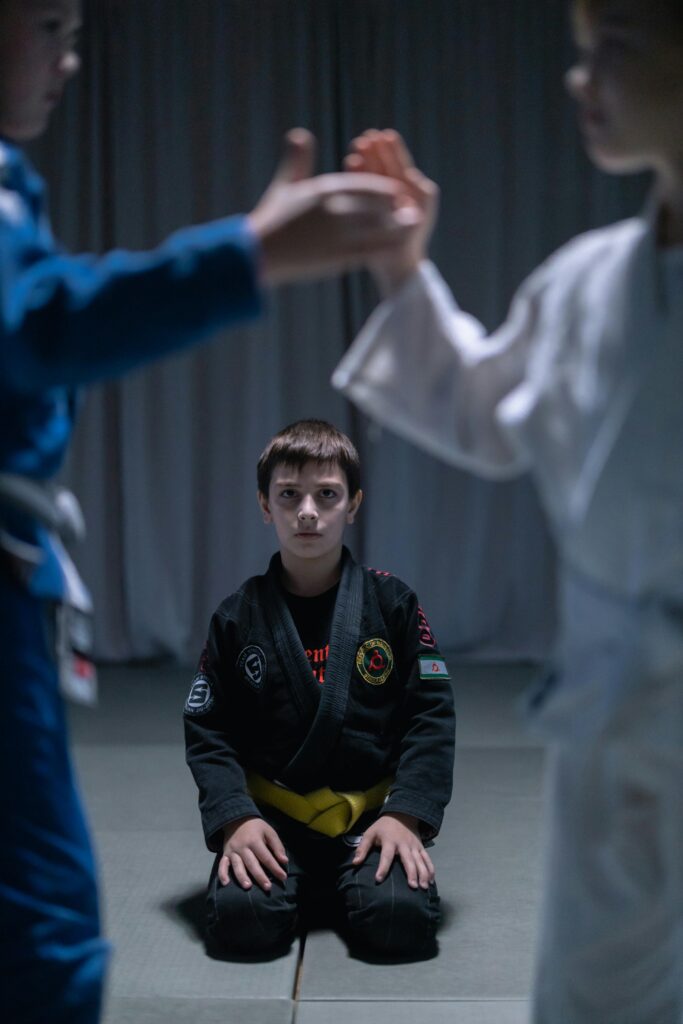Your home is where you feel safest, but it’s essential to be prepared for situations that threaten that safety.
Understanding how to defend yourself from home invasion involves more than quick thinking—it’s about knowing your rights, reinforcing your home, and reacting effectively if danger arises.
This guide provides straightforward, actionable steps to help you stay in control before, during, and after an intrusion.
From legal considerations to practical defense strategies, every point focuses on helping you protect what matters most while staying within the boundaries of the law. Safety starts with being ready. Let’s get into it.
Understanding Your Legal Rights in Home Defense
Knowing what you can and can’t do under the law is essential for effective home defense. When you’re prepared and informed, you can act with confidence, staying within the boundaries of the law to protect yourself and your loved ones.
Self-Defense Laws Explained
Many states enforce laws like the “castle doctrine” or “stand your ground,” which are designed to protect homeowners who act in self-defense. These laws allow you to use force, including lethal force, to stop an intruder who unlawfully enters your home.
While the details differ between states, the common principle is clear: your home is your sanctuary, and you have the legal right to defend it against an immediate and unlawful threat.
Knowing the specifics of your state’s laws will help you navigate a high-stakes situation without hesitation.
Differentiating Defense from Aggression
Self-defense means protecting yourself without crossing the line into unnecessary aggression. The force you use must align with the level of threat you’re facing.
For example, using a firearm against an intruder who is retreating or unarmed could raise questions about whether your actions were reasonable.
Staying calm and assessing the situation carefully allows you to respond proportionally, ensuring your actions are seen as defense, not retaliation.
Legal Consequences of Overstepping Boundaries
Exceeding the limits of self-defense can lead to serious consequences, such as criminal charges or lawsuits. Using excessive force or misjudging a situation may turn a defensive act into a legal battle.
That’s why understanding the laws in your area is essential. You’re better equipped to act within the law when you know exactly where the line is drawn, allowing you to focus on protecting yourself without fear of unintended repercussions.
How to Prepare Your Home for Safety
Creating a safer home environment doesn’t just give you peace of mind—it actively reduces the risk of a break-in. Small adjustments and simple habits can make your home less appealing to intruders.
Securing Entry Points
Start with the main access points to your home: doors and windows. Ensure all doors have sturdy deadbolt locks and consider upgrading to smart locks for added security.
Frames are often overlooked, but reinforcing them with stronger materials can prevent forced entry. Windows can be a vulnerability, so applying shatterproof film or installing bars on ground-floor windows makes it harder for intruders to gain access.
These steps may seem small, but they create an effective first line of defense.
Importance of Surveillance Systems
Installing surveillance cameras can significantly enhance your home’s security. Visible cameras alone can deter criminals, but their real value lies in capturing evidence.
Position cameras at entry points like the front door, back door, and key windows. Pairing these with motion-activated lights ensures intruders are caught in the spotlight, sending a clear message that your home is protected and monitored.
Creating a Safe Room
A safe room serves as a haven during a break-in, giving you time and space to call for help. Choose a secure room with a solid door that locks from the inside.
Keep it stocked with basic supplies like a flashlight, bottled water, and a fully charged phone. A first aid kit is essential for emergencies, and having a portable charger can keep you connected if the situation lasts longer than expected.
Knowing you have a secure space adds an extra layer of confidence to your preparations.
Training in Safe Practices
Self-defense isn’t just about physical actions—it’s about being aware and prepared. Enrolling in self-defense classes builds confidence and teaches practical techniques you can use in real situations.
At home, practice situational awareness by identifying blind spots or vulnerabilities around your property. Developing these habits helps you remain vigilant and proactive, making your home a less attractive target for intruders.
When the Intruder is Inside
Despite your precautions, an intruder might still gain entry. How you respond in those moments can make all the difference between safety and unnecessary harm. Staying composed and knowing your plan ensures you act effectively under pressure.
Remaining Calm and Collected
Panic can cloud your judgment and lead to dangerous mistakes. Staying calm allows you to think clearly and act purposefully.
Take a moment to assess the situation and prioritize getting yourself and your family to safety. If you’ve prepared a safe room, use it immediately. Once inside, secure the door and focus on your next steps, such as calling for help.
Calling 911
Contacting emergency services should be your first move when it’s safe to do so. Be as specific as possible when describing the situation—provide your address, details about the intruder, and whether they appear armed.
Keeping the operator updated ensures that law enforcement arrives fully informed and prepared to handle the situation. Staying on the line also provides you with a direct connection to help, offering reassurance during a tense moment.
De-escalation Techniques
If you can’t avoid coming face-to-face with the intruder, de-escalation may be your safest option. Speak calmly and assertively, avoiding any sudden movements that could escalate tension.
Maintaining eye contact without appearing confrontational can help you establish control. The goal is to buy yourself time and create an opportunity to retreat or call for help.
When to Act in Self-Defense
In some cases, there’s no choice but to act. If your safety or that of your loved ones is at immediate risk, self-defense becomes necessary. Use any skills you’ve practiced to neutralize the threat quickly and decisively.
Your objective should be to disable the intruder long enough to escape or ensure they’re no longer a danger. Acting with intention and confidence increases your chances of staying safe during the encounter.
Tools and Weapons: Legal and Practical Considerations
The tools you choose for home defense can shape the outcome of a break-in. It’s not only about having the right equipment but also being confident in your ability to use it effectively.
Let’s look at some practical and legal options for defending your home.
Non-Lethal Tools
Non-lethal tools like pepper spray and stun guns are effective for temporarily incapacitating an intruder. These tools can buy you critical moments to escape or call for help.
Pepper spray causes temporary blindness and breathing difficulties, while stun guns deliver a shock that disrupts muscle function. It’s important to practice using these tools so you can react quickly and confidently during an emergency.
Firearms for Home Defense
Firearms can provide significant stopping power, but they come with serious responsibilities. Safe storage is critical; firearms should always be kept in a secure, locked location inaccessible to unauthorized users.
Equally important is proper training—anyone who might use the firearm should know how to handle it safely. Regular practice helps ensure you can remain calm and accurate under pressure.
Owning a firearm is about being prepared, not just having one.
Everyday Items as Improvised Defense
Sometimes, the best tools are the ones already around you. Items like a broom handle, a heavy flashlight, or even a kitchen knife can be used to defend yourself if no other options are available.
The goal is to create distance between you and the intruder, giving yourself time to escape or call for help. Improvised defense relies on quick thinking, making it an important part of your overall readiness.
Aftermath: Handling the Situation Post-Intrusion
What you do after a home invasion is just as important as how you handle it in the moment. Following the right steps can protect your safety and ensure the best possible outcome.
Cooperating with Law Enforcement
When police arrive, stay calm and provide a clear account of the events. Stick to the facts and avoid speculation. If you have security cameras, let officers know about any footage that might be useful.
Refrain from touching or moving anything in the area where the incident occurred. Preserving the scene helps law enforcement build an accurate understanding of what happened.
Legal Advice and Representation
If legal questions arise, consulting an attorney is a wise move. They can guide you through any potential investigations or disputes related to your actions during the invasion.
Having legal support ensures your rights are protected and can provide clarity in a stressful situation. An attorney can also assist with issues like property damage claims or liability concerns.
Emotional Recovery and Safety Reassessment
Experiencing a home invasion can be traumatic, and recovery often goes beyond repairing physical damage. Seeking counseling or talking to a professional can help you process the event.
This is also the time to evaluate your home’s security. Look at what worked and what could be improved, such as adding better locks, upgrading surveillance systems, or practicing self-defense techniques.
Taking these steps can help you regain a sense of control and prepare for the future.
Strengthen Your Home Defense Skills Today
Protecting your home and loved ones starts with preparation, awareness, and the right skills. From understanding legal boundaries to mastering practical techniques, taking these steps ensures you’re ready for any challenge.
At Eye2Eye Combat, we bring expert self-defense training directly to you. Our on-location programs are customized for your environment, equipping you with the tools and confidence to act effectively in real-world situations.
Ready to take the next step? Let Eye2Eye Combat empower you to protect what matters most—schedule your training today and redefine what safety means for your home and family.
FAQs
What is the best defense for a home invasion?
The best defense is preparation. Start by securing your home with strong locks, an alarm system, and motion-sensor lights. Have a plan for emergencies, like a safe room or an escape route. Learning self-defense techniques and practicing situational awareness will also help you feel ready to handle any situation.
How to stop being scared of home invasions?
Fear often comes from feeling unprepared. Taking proactive steps, like improving your home’s security and learning self-defense, can build confidence. Practice routines that help you feel in control, such as locking doors and windows and creating a family safety plan. Over time, preparation can replace fear with a sense of security.
How to stop home invasion?
To reduce the risk, focus on deterring intruders. Use visible deterrents like security cameras, alarm systems, and motion-activated lights. Make your home look occupied by using timers for lights and keeping outdoor areas well-lit. Building good relationships with neighbors can also create a watchful community, further discouraging break-ins.
How to defend yourself against an attacker?
Defending yourself starts with awareness. If possible, avoid physical confrontation by creating distance and escaping. If you need to act, aim for simple, effective techniques like targeting sensitive areas (eyes, throat, or knees) to disable the attacker. Training in self-defense classes helps build confidence and skills for these situations.





